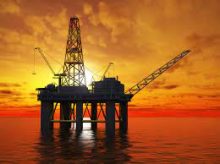Herein this article, we discussed the oil and gas industry and furthermore we explained the different oil and gas sectors.
Oil and Gas is Considered being the biggest sector in the world in terms of dollar value, it is a global powerhouse using hundreds of thousands of workers worldwide and generating hundreds of billions of dollars globally each year. In regions which house the major NOCs, these oil and gas companies are so vital they often contribute a significant amount towards national GDP.
What is called oil and gas industry?
The industry, also known as petroleum industry or the oil patch, includes the global processes of exploration, extraction, refining, transportation (often by oil tankers and pipelines), and marketing of petroleum products. The largest volume products of the industry are fuel oil and gasoline (petrol). Petroleum is also the raw material for many chemical products, including pharmaceuticals, solvents, fertilizers, pesticides, synthetic fragrances, and plastics. The industry is usually divided into three major components: upstream, midstream, and downstream. Upstream regards exploration and extraction of crude oil, midstream encompasses transportation and storage of crude, and downstream concerns refining crude oil into various end products.
Petroleum is vital to many industries, and is necessary for the maintenance of industrial civilization in its current configuration, making it a critical concern for many nations. Oil accounts for a large percentage of the world’s energy consumption, ranging from a low of 32% for Europe and Asia, to a high of 53% for the Middle East.
READ: Oil And Gas Consultancy Services
Different oil and gas sectors
The energy sector has three key areas: Upstream, midstream and downstream.
What is upstream? – Upstream is E&P (exploration and exploration). This involves the search for underwater and underground natural gas fields or crude oil fields and the drilling of exploration wells and drilling into established wells to recover oil and gas.
What is midstream? – Midstream entails the transportation, storage, and processing of oil and gas. Once resources are recovered, it has to be transported to a refinery, which is often in a completely different geographic region compared to the oil and gas reserves. Transportation can include anything from tanker ships to pipelines and trucking fleets.
What is downstream? – Downstream refers to the filtering of the raw materials obtained during the upstream phase. This means refining crude oil and purifying natural gas. The marketing and commercial distribution of these products to consumers and end users in a number of forms including natural gas, diesel oil, petrol, gasoline, lubricants, kerosene, jet fuel, asphalt, heating oil, LPG (liquefied petroleum gas) as well as a number of other types of petrochemicals.
What are the largest volume products
The largest volumes of products of the oil and gas industry are fuel oil and gasoline (petrol). Petroleum is the primary material for a multitude of chemical products, including pharmaceuticals, fertilizers, solvents and plastics. Petroleum is therefore integral to many industries and is of critical importance to many nations as the foundation of their industries.

